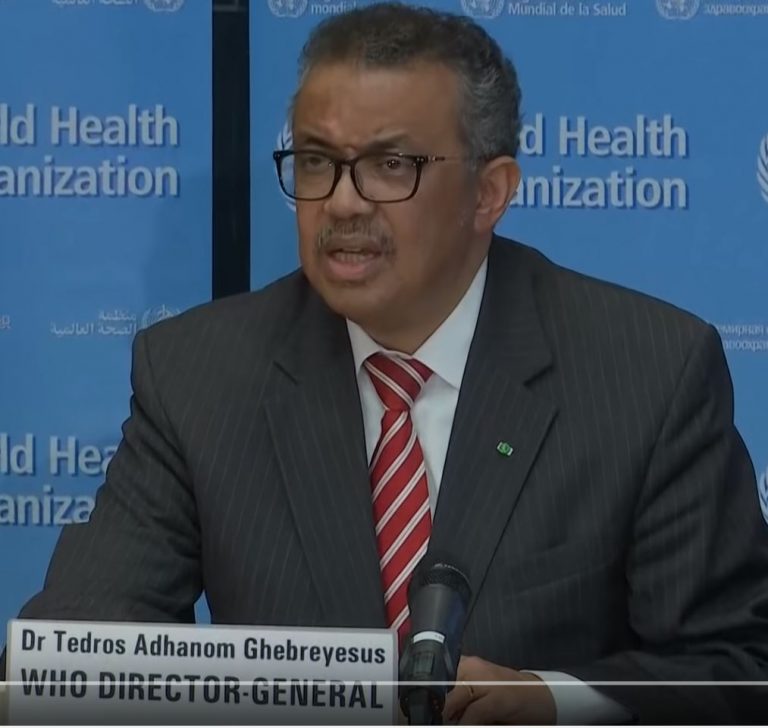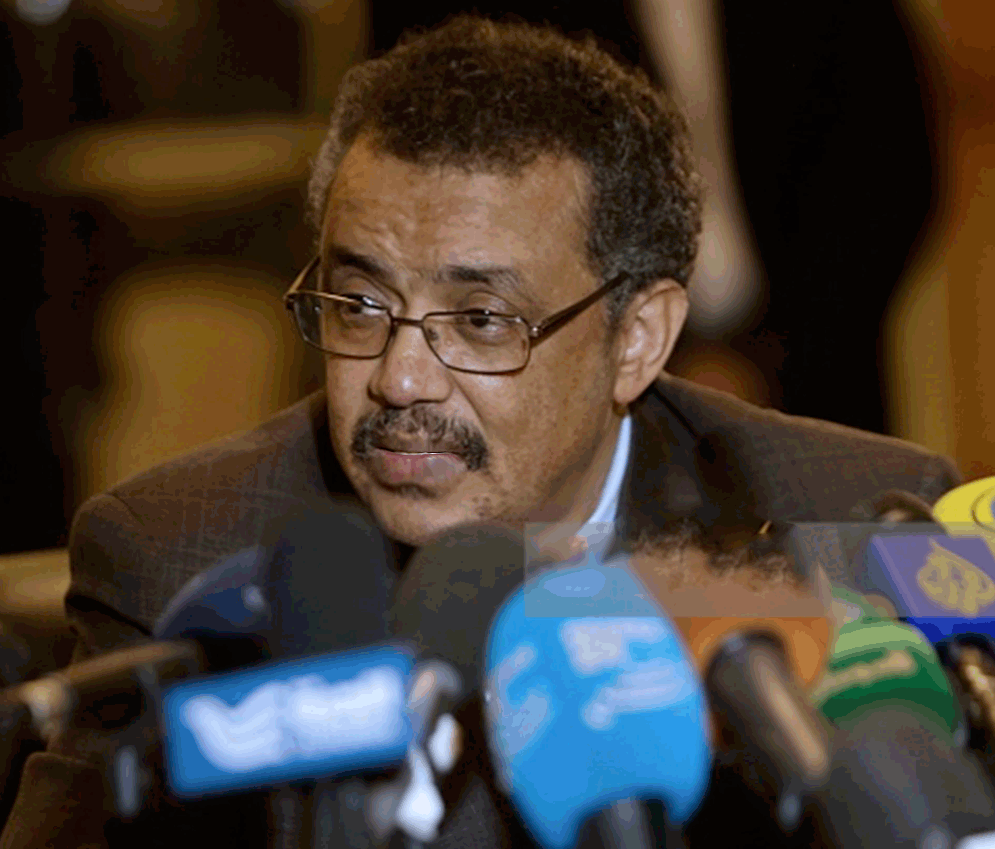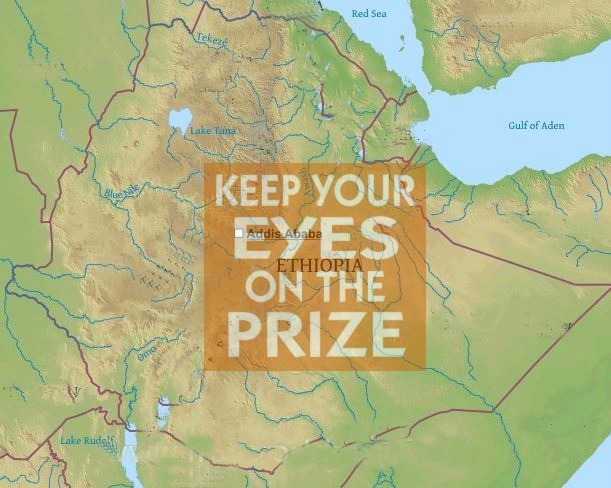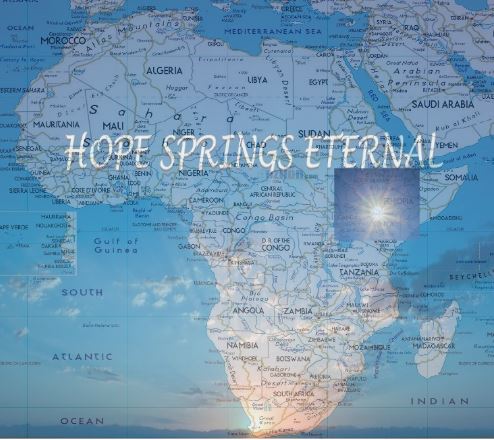Chinese Investments in Africa: “Chopsticks Mercantilism”
Guest Commentary: George B N Ayittey
 In the early parts of the 21st century, China became an important source of finance for African development. The continent’s infrastructure was in disrepair; it had crumpled after decades of abject neglect and destruction from senseless civil wars. A substantial investment was – and still – needed to rebuild this infrastructure. According to a World Bank Report (2009), “the poor state of infrastructure in Sub-Saharan Africa—its electricity, water, roads and information and communications technology (ICT)—cuts national economic growth by two percentage points every year and reduces productivity by as much as 40 percent.” To close the infrastructure gap, an annual spending of $93 billion would be required. Africa has to spend US$360 billion on infrastructure by 2040, according to the African Development Bank (AfDB).
In the early parts of the 21st century, China became an important source of finance for African development. The continent’s infrastructure was in disrepair; it had crumpled after decades of abject neglect and destruction from senseless civil wars. A substantial investment was – and still – needed to rebuild this infrastructure. According to a World Bank Report (2009), “the poor state of infrastructure in Sub-Saharan Africa—its electricity, water, roads and information and communications technology (ICT)—cuts national economic growth by two percentage points every year and reduces productivity by as much as 40 percent.” To close the infrastructure gap, an annual spending of $93 billion would be required. Africa has to spend US$360 billion on infrastructure by 2040, according to the African Development Bank (AfDB).
Africa, however, did not have the funds but had natural resources, which China needed to feed its economic machine galloping at a dizzying 9 percent clip in 2006. So China went looking for resources in Africa and elsewhere, wooing African leaders with diplomatic platitudes about “equal terms” and lofty promises of foreign aid without conditions. It declared 2006 the “Year for Africa” and convened an Africa Conference in Beijing in November. That was music to the ears of African leaders, miffed at the West’s insistence on conditionalities for its aid. Operating on the fallacious notion that “the enemy of my enemy is my friend,” 48 African heads of state – mostly from sub-Saharan Africa – tripped over themselves to the conference, threw caution to the wind and began signing a blizzard of “infrastructure-for-resources” deals or exchanges. These deals were touted as win-win for both. As Benjamin (2017) noted,
Within a decade some 1 million Chinese had moved to Africa, while Chinese-African trade rose by a factor of 10, to $115 billion. Chinese direct investment skyrocketed to more than $9 billion from less than $0.5 billion in 2003 (although the United States remains the continent’s biggest investor overall). China is now the largest trading partner for the continent (including North Africa). Chinese trade with Africa hit $222 billion in 2014, making China the region’s biggest trading partner for a sixth consecutive year.
Among the Chinese projects are the Husab uranium mine in Namibia, a Chinese military base in Djibouti, an $8 billion high-speed railway through Nigeria and a $4 billion, 466-mile transnational railway from Djibouti to Addis Ababa in Ethiopia are just a few of the Chinese projects already built or underway across the continent.[1] Chinese mining investments have increased 25-fold in just 10 years, from stakes in a few mines to more than 120 in 2015.[2]
However in 2015, China’s economy hit the skits, reducing demand for Africa’s raw materials. To help ameliorate the discomfort, Chinese President Xi Jinping pledged $60 billion to the continent over three years in loans, export credits and grants in December 2015.[3] Well-intentioned perhaps, but China is unlikely to remain an important source of finance for some development goals (SDGs). Even then, new evidence has unfortunately emerged that questions the credibility of the Chinese source of finance.
Chinese investments in Africa did not produce the glorious “win-win” results most analysts had expected. In many countries, the “infrastructure-for-resources” deals were of dubious nature. Under many of those deals, some shady Chinese middlemen or syndicates undertook feasibility studies, estimated the cost of the infrastructure project andy then sought financing from China’s EX-IM bank. For repayment, they demanded a quantum of the African country’s resources to be shipped to China –essentially a barter deal.
Under this scheme, there was every incentive to inflate the cost and make the deal as “gargantuan” as possible. The higher the cost estimate, the larger the loan and the larger the loan, the greater the quantum of resources that has to be shipped to China for repayment. A high cost estimate obviously benefited the Chinese company that would undertake the construction as that translated into huge profits. And the more gargantuan the loan, the more swollen-headed the African head of state, who stood to extract much political mileage from it. For example, China offered ex-president, Capt. Moussa Dadis Camara of Guinea, a $7 billion “infrastructure-for-resources” deal in 2009. Guinea’s GNP was only $4.5 billion. Throughout its history, no entity has given Guinea such a huge loan — and even one that exceeded its GNP; not even the World Bank came close.
What the recipient African country got in return was infrastructure at grossly inflated cost that might or might not be delivered and some political PR mileage. And if the African government wavered, the Chinese were willing to build a presidential palace or a sports stadium as “gifts from China.”
Ordinarily, such a deal would be flagged by auditors and civil society but in many cases, it was essentially a “closed shop” deal, shrouded in secrecy, and signed with mostly autocratic regimes. The deals were often opaque with no open and competitive bidding – all stacked in China’s favor. If approved, it was a Chinese company that undertook the infrastructure projects with its own materials and workers, generating scant employment opportunities for the locals. And there was no protection against cost over-runs. A year or more later, the Chinese company could jack up the cost estimate, saying it erred in its initial estimation. Such was the case with the Bui Dam Project in Ghana. The total cost of the dam’s construction was initially estimated at $622 million in 2009, but a cost review conducted in 2012 raised that amount by $168 million. [4]
We discuss three case studies.
A $23 Billion Deal for Nigeria
A typical case was the $23 billion deal China signed with Nigeria — an oil-producing country that does not produce enough refined petroleum products for its people and must import 85 percent of them. China was to build 3 refineries with a combined capacity of 750,000 barrels a day that would exceed the domestic demand of some 450,000 b/d. In exchange, China wanted to grab one-sixth of Nigeria’s 36 billion barrels of oil reserves.[5]
The price tag of $8 billion for a refinery with the capacity of 250,000 b/d was outrageous as compared to these prices:
- In Oct 2002, President Obasanjo laid the foundation stone of the $1.5 billion Tonwei Refinery in Bayelsa State. The Tonwei Refinery will have an initial capacity of 100,000 bbl/d and it can be expanded to 200,000 bbl/d.[6]
- In Egypt, China will build a $2 billion refinery that would be the largest such plant in the Arab nation and Africa. The capacity of the refinery will annually amount to 15 million tons or 105 million barrels of oil or 287,671 bbl/d.[7]
Clearly, the price that China charges for building oil refineries varies wildly among African countries. Even more outrageous was what China was demanding in exchange — a sixth of Nigeria’s 36 billion oil reserves. A simple multiplication by the price of oil at $107 a barrel in 2010 yielded $642 billion, which was what China was demanding for a $23 billion infrastructure project.
In July, 2012, Nigeria signed a memorandum of understanding with Vulcan Petroleum Resources for a $4.5 billion project to build six refineries with a combined 180,000 barrel a day capacity. Vulcan, an affiliate of New York-based private equity firm Vulcan Capital Corp, aimed to have two of the refineries finished in under a year.[8]
A $3 Billion Deal for Ghana
In 2012, China offered Ghana a $3 billion loan on barter terms. The loan was to be used to rehabilitate portions of Ghana’s dilapidated railway system, build infrastructure to capture gas that would otherwise be flared from oil production, and the reconstruction of roads. In exchange for the loan, China demanded a daily supply of Ghana crude of 13,000 barrels – the entire portion of the Government of Ghana’s share in Jubilee Oilfields – for the next fifteen and half years! The ruling NDC government, which had a majority in Parliament, agreed to sign the deal.[9]
A few strokes on a cheap calculator would reveal that over the fifteen and half year period, 74 million barrels of oil would be shipped to China. The value at the price of crude oil of $107 in 2010 per barrel, works out to be $8.1 billion. Nice repayment for a loan of $3 billion.
The $4 billion “Lunatic Express” in Kenya
On June 6, 2017, President Uhuru Kenyatta’s opened a $4 billion on a 300-mile railway connecting the capital, Nairobi, to the Indian Ocean port of Mombasa – the most expensive infrastructure project since Kenya’s independence 54 years ago and one-fifth of its national budget. China’s Eximbank provided about 90 percent of the funding for Nairobi-Mombasa project. The loan has already pushed the Kenyan debt above 50 percent of GDP, and imports of Chinese supplies and materials required to build the railway are making people anxious about Kenya’s worsening trade imbalance with China.[10] Pamphlets heralding the arrival of the Express were in Chinese. Some staff members wore uniforms of red and gold — the colors of China’s flag. Even the music on the train wasn’t Kenyan. And to add insult to injury, a sculpture of Mao Zedong at the Mombasa station was actually that of Zheng He, a 15th-century Chinese explorer who sailed to East Africa.[11] in a related railway project, the launch of Madaraka Express inter-county train was postponed“ because the Managing Director Atanas Maina said “China Road and Bridge Corporation employees, who were key to the operations, had just arrived in the country and needed time to “go through the handover process.”[12]
“Sweet and Sour” Deals
In those “sweet and sour” deals (sweet for China but sour for Africa), there were additional costs. Since the deals were signed with mostly autocratic African governments, they were not transparent or subject to scrutiny. In many cases, they were secured through secrecy, outright bribery, kickbacks – for example, building a presidential palace for Sudan’s despot, donating the blue tiles that adorn Robert Mugabe’s new £7 million palace in Harare, a large Namibian presidential palace in Windhoek, and sports stadiums in Congo DR and Guinea.[13]
In July 2008, there was outcry over the China-Niger oil deal. Civil rights groups called for a parliamentary inquiry into the $5 billion (£2.5 billion) contract and for scrutiny of how funds would be spent. China’s state oil company was given oil exploration rights in Niger in June. “A mining union in Niger said the deal with China took place in the greatest of secrecy and with contempt for regulation.”[14] In Nov 2011, Niger vowed to commission an audit of the Soraz oil refinery being built by Chinese oil company, CNCP, with a capacity of 20,000 barrels per day, after the price tag rose to $980 million from $600 million.[15] It may be noted that the same refinery with the same capacity built by China in Chad cost only $60 million.[16]
In July 2009, Namibian prosecutors began investigating allegations of bribery kickbacks on government contracts with China. One involved a contract to supply Namibia with scanners at security checkpoints. The Beijing-based Nuctech Companies Limited that makes the scanners, was headed until 2008 by the son of Hu Jintao, China’s president. Nuctech was accused of having paid $4.2 million in kickbacks to a Namibian front company.[17] Another investigation involved a Chinese contract to build a key railroad link as prosecutors burrowed through a web of corruption on deals with China.
On July 4, 2010, Luanda’s general hospital evacuated 150 patients over worries that the four-year-old, $8 million Chinese-built structure could collapse, Angola’s state radio reported. [18].
In Guinea, the Chinese syndicate, Queensway, set up a joint venture, African Development Corporation (ADC), with 85% share and the government with the remaining 15%. Guinea has the world’s largest reserves of bauxite and its largest untapped reserves of high-grade iron ore. ADC won exclusive rights to new mineral concessions in Guinea, including the right to negotiate oil-production contracts in the Gulf of Guinea. In return, the syndicate promised to invest up to $7 billion in housing, transport and public utilities. Guinea’s GDP is about $4.5 billion. Queensway syndicate was so pleased that it gave Guinea’s military ruler, Captain Moussa Dadis Camara, a helicopter as a gift.
In Zimbabwe, the syndicate created a new company, called Sino-Zimbabwe Development Limited, which received rights to extract oil and gas, and to mine gold, platinum and chromium. In return, the company publicly promised to build railways, airports and public housing. These pledges were valued at $8 billion by Mr Mugabe’s government.
But as The Economist (Aug 13, 2011) noted,
Queensway syndicate failed to meet many of the obligations. Zimbabwe is still awaiting even a fraction of its promised infrastructure. Chinese goods sent to Africa are notorious for their poor quality. None of a shipment of 50 buses to Zimbabwe worked and an order for 250 more was suspended. Of three MA60 passenger jets the Chinese sent to Mugabe, one never managed to fly, one had to make an emergency landing at Victoria Falls, injuring many passengers, and the third caught fire on take-off in Harare in Nov 2008. All were grounded. And Guinea never received the 100 public buses that were meant to arrive within 45 days of the 2009 deal.
The achievement of some SDGs would be difficult with the influx of Chinese goods and workers. Clothing manufacturers in Lesotho, Nigeria and Zambia complain bitterly of cheap Chinese goods destroying their markets and jobs. In Nigeria, the flood of Chinese products has devastated Kano’s manufacturing sector. In 1982, 500 factories churned out textile products in Kano, but fewer than 100 remain operational today, most at far less than full capacity. Kano’s Kwari textile market, the biggest in West Africa, now trade Chinese fabrics and clothing. A decade ago, 80 percent of the fabric sold at Kwari was made in Nigeria, compared with 5 percent in 2012.[19] There are more beggars and other visible signs of poverty in Kano than ever before. It is not far-fetched to link the collapse of the textile industry in northern Nigeria with the rise of the terrorist group, Boko Haram.
Textile factories no longer offer Africa’s youth employment opportunities and youth unemployment has now become a ticking time bomb in Africa. Disenchanted youth, disillusioned over lack of jobs started the Arab Spring in 2011.[20] Other youth left their countries and embarked on dangerous crossings across the Sahara desert to seek greener pastures in Europe, with thousands drowning in the Mediterranean Sea. Still other unemployed youth fell prey to radical ideas and were recruited by terrorist groups…
Unable to compete with Chinese imports, textile factories in Lesotho closed in 2003 and 2004, throwing over 5,000 workers out of their jobs. In South Africa, the textile union said some 100,000 jobs have been lost as Chinese synthetic fabrics replaced cotton prints in street markets across Africa. In 2007, the unions threatened to boycott anyone selling Chinese products. [21]
In Ghana, “there were more than 20 textile firms that employed more than 20,000 people in 1995. In 2012, the industry had only 4 textile factories, employing less than 3,000 Ghanaians. The country’s once thriving textile market is now flooded with Chinese substandard textile products, therefore surging the unemployment rate. The situation has further deteriorated with the textile companies currently in operation now employing some 2,961 people.”[22]
Africans derived little benefit from the “infrastructure-for-resources” deals with China since they offered scant employment opportunities. Not only did they destroy textile jobs but China brought its own workers into Africa. The Chinese also invaded sectors traditionally reserved for locals. In July 2011, shop owners in Uganda’s capital, Kampala, shut their businesses to protest against a weakened currency and the influx of Chinese traders.”[23] In August 2011, Ghana began arresting foreign nationals, mostly Chinese, illegally engaged in artisanal gold mining.
“Twenty-seven Chinese nationals engaged in illegal gold mining activities, popularly called “galamsey” operating in the Ankobra River at Kutukrom, near Prestea, Sikane-Asem and Tumantu in the Western Region, have been arrested by a joint military-police-immigration team. The police also seized from them three pump action rifles, 41 pieces of BB live cartridges, two walkie-talkies, 19 Chinese passports, four mobile phones, a metal safe with keys and their machines.”[24]
Further, the Chinese deals enriched the corrupt ruling elites. Angola, Nigeria, Sudan, and Zimbabwe are examples where the trade and oil deals with China have not benefited the poor. The Marange diamond fields in Zimbabwe, adjudged to be one of the largest in the world with an estimated value of more than $10 billion were developed with the help of the Chinese company, Anjin. Revenue from diamond sale was plundered by the ruling elite, military and security offices. Very little of the revenue found its way into government coffers.[25] “The Chinese are creaming off millions in hard currency from Marange diamond fields through an agreement which allows them to milk 90% of the revenue generated from the deal, depriving the country of more than US $200 million to date.”[26]
Chinese investments and aid, disingenuously described as with no strings attached, is doing grave harm to Africa. First, it has been propping up hideously repressive regimes in Ethiopia, Guinea, Sudan, and Zimbabwe.[27] Second, China’s increased engagement with Africa impedes the continent’s halting steps toward democratic accountability and better governance. The West made its aid conditional on progress toward reform in several areas, including democratic pluralism, the rule of law, human rights, reduction of graft and improved access to education. China never required these challenging commitments. Any rogue regime that spits venom at World Bank conditionalities was welcomed by China.
Indeed in 2002, an I.M.F. team went to Angola to help the country put its financial affairs in order. It was flabbergasted by Angola’s robber economy, and even more by the nonchalance of its leading officials. Though the regime contracted $3 billion worth of loans in 2001 alone, one senior official told the I.M.F. team that Angola had taken out no commercial loans in recent years.[28] In March 2002, the I.M.F. reported that despite years of assistance, the government’s finances remained hopelessly opaque, that officials had fended off all demands for reform and thus that “it would be very difficult for Angola to formulate a meaningful poverty-reduction strategy.” A “donors’ conference” was scheduled for that July. But after the I.M.F. report, the United States and Britain pulled out, and Angola, still deeply in debt despite billions in oil revenue, was left to bitterly contemplate its options. Luckily for Angola, a new benefactor had just materialized. China came to the rescue with a $2 billion oil deal.
There were several other African countries that literally told Western donors and multilateral financial institutions to go jump into the Atlantic Ocean. Most disturbing, the West caved. Alarmed by the inroads China was making in Africa, the European Union hurriedly convened a EU-Africa Summit in April 2014. It brought together more than 60 EU and African leaders, and a total of 90 delegations, to discuss the future of EU-Africa relations and reinforce links between the two continents. Not to be outdone, the US organized its own US Africa Summit in August 2014, with heads of state and senior government officials from 50 African countries. Nowhere on the two summit agendas was reform even mentioned — a clear license to dictators to do what they wanted. But there has been some backlash. The continent that suffered so much from Western exploitation and oppression is not likely to take another form of exploitation from any foreign quarter.
Rising Anti-Chinese Sentiments
China is not to blame for deals that went sour. It knows what it wants in Africa and cares less what it takes to get it. It will bribe if has to. It built a $200 million glitzy new headquarters for the African Union in Addis Ababa.[29] China sees no evil, hears no evil in Africa – precisely the kind of posture African dictators, tired of Western lectures, relish.
China drives a hard bargain and should not be faulted.[30] The problem has been African leaders who adamantly refuse to learn from their own history which teaches that every foreign entity that goes to Africa does so to pursue its own interest. Americans go to Africa to pursue American interests, the French to pursue French interests, Arabs, Arab interests and so on. Certainly, the Chinese are not in Africa because they love black people so much. This is a perspective African leaders need to understand
It is clear that Africa leaders seldom pursued African interests, except their own which is stirring up discontent in many countries. The initial enthusiasm that greeted China in Africa has now cooled. “There is mounting objection to China’s deepening forays into Africa” said News Africa (March 2007). Former President Thabo Mbeki of South Africa warned against allowing China’s push for raw materials to become a “new form of neo-colonialist adventure” with African raw materials exchanged for shoddy manufactured imports and little attention to develop an impoverished continent.[31] Rene N’Guetta Kouassi, the head of the African Union’s economic affairs department echoed this warning: “Africa must not jump blindly from one type of neo-colonialism into Chinese-style neo-colonialism.”[32] Some African commentators are less charitable, denouncing what they see as “chopsticks mercantilism,” alluding to the chopsticks dexterity with which China picks off at its leisure platinum from Zimbabwe, copper from Zambia, and oil from Angola, Nigeria and Sudan.
The backlash against Chinese investments has been particularly strong in Zambia due to workplace accidents, poor working conditions and below-minimum wage pay at Chinese-run copper mines. More than 50 Zambian workers died in a 2005 mine explosion and dozens of others were sacked by Chinese security guards in 2006. In the run-up to Zambia’s general election in September 2006, the opposition leader Michael Sata made China’s investment in the country a campaign issue. According to Sata, Chinese businesses employ relatively few Zambians. “Our Chinese don’t bring in any equipment or create any sensible employment. In fact, to every Zambian in a Chinese company, there are about 15 Chinese . . . Sata called the Chinese profiteers, not investors, in a country where unemployment is about 50 percent and more than 73 percent of people live in poverty. Chinese investment has not added any value to the people of Zambia,” he charged.[33] In a blatant show of arrogance, Chinese Ambassador Li Baodong warned Zambians that China might sever diplomatic ties with Zambia if Sata became president and recognized Taiwan. The ambassador also raised the specter of a halt in Chinese investment. But Zambians were unfazed; they elected Michael Sata in Sept 2011 but passed away in October 2014.
Militants in Nigeria’s volatile oil-producing region detonated a car bomb in May 2006 and issued a warning that investors and officials from China would be “treated as thieves” and targeted in future attacks. A spokesman for the Movement for the Emancipation of the Niger Delta (MEND) said in an e-mail sent to news organizations that the car-bomb attack was “the final warning” before the militants turned their attention to oil workers, storage facilities, bridges, offices and other “soft oil industry targets.”[34] In Ethiopia, the Ogaden National Liberation Front (ONLF) has warned Chinese energy exploration companies against operating in the Ogaden Region. In April 2007, nine Chinese workers were killed in an attack by armed men on an oil field in eastern Ethiopia.[35]
We have discussed this Africa China relationship at length because this turn of events is unfortunate and must be condemned in no uncertain terms. Trade with China or any other foreign nation should bring benefits to both parties. But these attacks against the Chinese are likely to continue as long as the trade deals do not benefit the people in some African countries and it is difficult to argue if more trade with or investment from China will help the African poor.
—————————-
 Dr. Ayittey is a native of Ghana and obtained his PhD from the University of Manitoba, Winnipeg, Canada in 1981 with a GPA of 4.0. He taught at Bloomsburg University, Bloomsburg, PA from 1985 to 1988. He was selected as a National Fellow in 1989 by the Hoover Institution at Stanford University, Stanford California. In 1990, he became a Distinguished Economist in Residence at American University, Washington DC, until he retired in 2010.
Dr. Ayittey is a native of Ghana and obtained his PhD from the University of Manitoba, Winnipeg, Canada in 1981 with a GPA of 4.0. He taught at Bloomsburg University, Bloomsburg, PA from 1985 to 1988. He was selected as a National Fellow in 1989 by the Hoover Institution at Stanford University, Stanford California. In 1990, he became a Distinguished Economist in Residence at American University, Washington DC, until he retired in 2010.
Dr. Ayittey has written several books on Africa, including Indigenous African Institutions, Africa Betrayed, Africa in Chaos, Africa Unchained, Defeating Dictators, Applied Economics for Africa
Africa Betrayed won the HL Mencken Award for “Best Book in 1993.”
He has been a regular contributor to the opinion pages of The Wall Street Journal, the New York Times, the Los Angeles Times, the Washington Post, and the Times of London. In addition, some of his articles have been syndicated for worldwide distribution.
Dr. Ayittey has testified on numerous occasions before Congressional and Senate committees. He has also appeared as guest on many radio and television programs, including the BBC, ABC, NBC, CBS (Canada), Straight Talk Africa and Voice of America. He was selected among The World’s Top 100 Global Thinkers” by the Foreign Policy magazine in 2010.
He is currently the President of the Free Africa Foundation in Washington DC, which serves as a catalyst for reform.
——————————-
References
African development Bank (2015). Assessing Progress in Africa Toward the MDGs https://www.afdb.org/fileadmin/uploads/afdb/Documents/Publications/MDG_Report_2015.pdf
Benjamin, Matthew, 2017, “Sub-Saharan Africa: Will it regain its economic footing?” Sage Business Researcher, June 7, 2017.
—————————–
[1] See The New York Times, May 13, 2017, http://tinyurl.com/la2a8nl.
[2] See The New York Times Magazine, May 2, 2017, http://tinyurl.com/msm8eyx.
[3] See The Wall Street Journal, Dec. 4, 2015, http://tinyurl.com/my4g8ko.
[4] See “China is building a third of Africa’s new power capacity” Climate Home, April 7, 2016 www.hydroworld.com/articles/2008/09/china-signs-financing-for-ghanas-400-mw-bui.html
[5] See Financial Times, May 15, 2010: http://on.ft.com/wkh4vn).
[6] See Vanguard, October 21, 2002. http://allafrica.com/stories/200210230287.html
[7] See Reuters, May 2, 2010. http://af.reuters.com/article/newsOne/idAFJOE64105S20100502
[8] See Tim Cocks and Camillus Eboh, “Nigeria signs $4.5 bln refineries deal with Vulcan Petroleum,” Reuters, July 3, 2012 http://www.reuters.com/article/ozatp-nigeria-refineries-idAFJOE86200820120703
[9] See Daily Guide, Feb 29, 2012: http://bit.ly/xfmQdP.
[10] See Kimiko de Freytas-Tamura, “Kenyans Fear Chinese-Backed Railway Is Another ‘Lunatic Express,”The New York Times, June 8, 2017. https://mobile.nytimes.com/2017/06/08/world/africa/kenyans-fear-chinese-backed-railway-is-another-lunatic-express.html?mwrsm=facebook&referer=http%3a%2f%2fm.facebook.com
[11] Ibid.
[12] See “Launch of Madaraka Express inter-county train postponed“ Daily Nation, June 30, 2017 http://www.nation.co.ke/news/Madaraka-Express-inter-county-train-launch-postponed/1056-3994696-ruedmqz/index.html
[13] See RW Johnson, “China Empire-Builder Sweep Up Africa’s Riches,” The Sunday Times, July 16, 2006 https://www.thetimes.co.uk/article/chinas-empire-builders-sweep-up-african-riches-lgr0ngvlmms
[14] See, “Outcry Over China-Niger Oil Deal,”BBC, July 30, 2008 http://news.bbc.co.uk/2/hi/africa/7534315.stm.
[15] See Reuters, Nov 24, 2011.
[16] See AFP, Jan 20, 2012.
[17] See Sharon LaFraniere and John Grobler, “China Spreads Aid in Africa, With a Catch,” The New York Times, Sept 21, 2009; p.A1 and A12. http://www.nytimes.com/2009/09/22/world/africa/22namibia.html?_r=1&ref=africa,
[18] “Chinese-built Hospital Risks Collapse,” AFP, June 6, 2010 http://www.terradaily.com/reports/Chinese-built_hospital_risks_collapse_in_Angola_state_radio_999.html
[19] See Center for Research and Development, Sept 20, 2012. “The Collapse of the Textile Industry in Kano affects Africa’s largest textile market” http://www.crdng.org/the-state-of-kano-textile-industries-and-its-effect-on-the-nigerian-economy-a-study-of-the-kantin-kwari-market-in-kano-state/
[20] It was actually triggered by this self immolation of an unemployed graduate called Mohammed Boazizi, a Tunisian. Unable to find work, he set up a fruit cart by a roadside to sell some vegetables. A policewoman demanded to see his permit; he did not have any. Thereupon, the policewoman seized his cart. When he protested, the policewoman’s allegedly spat in his face – a contumacious indignity in the Arab world. When he went to the Ministry of interior to complain, the door was slammed in his face. Thereupon, he doused himself in gasoline and lit a match on Dec 10, 2010. Street protests erupted across Tunisia. Within one month, longtime dictator, Ben Ali, had fled to Saudi Arabia. The revolution spread to Egypt, Libya and the rest of the Arab world.
[21] See Progressive Economy, July 30, 2010 http://tasceconomists.blogspot.com/2010/07/china-iii-beijings-scramble-for-africa.html
[22] See Daily Graphic, April 30, 2012; p.40.
[23] See “Uganda Traders Close Shops in Protest,” BBC, July 6, 2011 http://www.bbc.com/news/world-africa-14053516.
[24] See Daily Graphic, March 12, 2012.
[25] See Victoria Eastwood and Robyn Curnow , “Inside Zimbabwe’s controversial Marange diamond field,” CNN, March 16, 2012 http://edition.cnn.com/2012/03/15/business/zimbabwe-marange-diamond-field/
[26] See “Chinese Cream Off US$200m Marange Diamonds,” Zimbabwe Daily, June 23, 2012
https://www.thezimbabwedaily.com/news/12305-chinese-cream-off-us200m-marange-diamonds.html
[27] Three strings are attached. First, the recipient or borrower shall have no diplomatic relationship with Taiwan. Second, construction of infrastructure must be undertaken by Chinese firms. Third, all the materials and labor must be Chinese. In other words, China’s loans are 100 percent tied.
[28] See James Traub, “China’s Africa Adventure,” New York Times Magazine, Nov 19, 2006 http://www.nytimes.com/2006/11/19/magazine/19china.html
[29] It was widely speculated that every room is bugged.
[30] Remember the aphorism, “no one can exploit you without your consent.”
[31] See AFP, Sept 30, 2009.
[32] See AFP, Sept 30, 2009.
[33] See The Washington Post, Sept 25, 2006; p.A16.
[34] See Washington Post, May 1, 2006; P.A15.
[35] See China Daily, April 24, 2007 http://www.chinadaily.com.cn/china/2007-04/24/content_858956.htm






